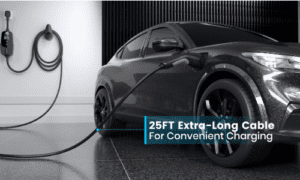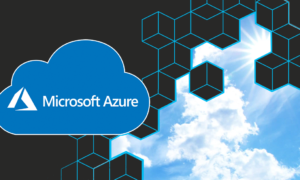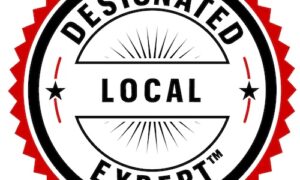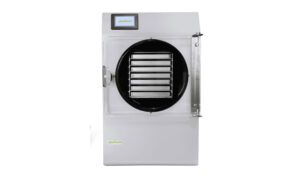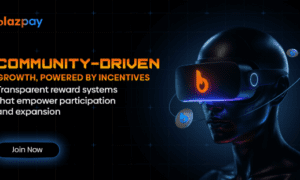Launching a new tech product is both an exciting and challenging process. From the development phase to marketing and final release, companies must carefully design every step to ensure success. In recent years, webinars have become one of the most effective tools for launching tech products. They offer a dynamic, cost-efficient, and interactive way to connect with potential users, investors, and stakeholders across the globe.
Why Webinars Are an Ideal Tool for Launching Tech Products
Webinars combine the benefits of live events with the global reach of online platforms. Unlike traditional product launches which require physical presence and logistical planning, webinars eliminate geographical limitations. They are relatively low-cost and easy to organize compared to on-site launches, and they can be scaled with ease. Additionally, they allow for real-time interaction, enabling you to address concerns and build trust with your audience instantly.
Moreover, in the tech industry where products often need detailed explanation, demonstrations, or walkthroughs, webinars serve as the perfect platform. They let you showcase features, present live demos, and even conduct Q&A sessions—all in one sitting.
Planning Your Tech Product Webinar Launch for Maximum Impact
Before you hit the “Go Live” button, you need a solid strategy. Planning is crucial to the success of your webinar and should never be rushed. Here’s how you can build a rock-solid plan:
Identify Your Target Audience Clearly and Early
Your audience determines your messaging, visuals, tone, and content. Are you targeting developers, business professionals, IT managers, or end-users? Each group has unique expectations and levels of technical knowledge. Knowing this beforehand helps you tailor your webinar content precisely.
Furthermore, when you align your webinar with the interests and needs of your audience, you increase both engagement and conversion rates. Personalization is key.
Set Clear Objectives and KPIs for Your Webinar
You must know what success looks like before launching your webinar. Whether your goal is to generate leads, drive traffic to your product page, or secure pre-orders, having specific objectives ensures focused content. Define key performance indicators such as:
Number of registrants
- Attendance rate
- Engagement rate (poll responses, questions asked)
- Conversions post-webinar
With this clarity, your team can refine both the content and the delivery style to achieve these targets effectively.
Choose the Right Webinar Platform Based on Features and Integration
Not all webinar platforms are created equal. Look for platforms that offer:
- Screen sharing and live demo capabilities
- Integration with your CRM or email marketing tools
- Polls, Q&A, and chat options for engagement
- Automated recording and analytics
Platforms like Zoom, GoToWebinar, Demio, and WebinarJam are commonly used. However, the right choice depends on your specific needs, so weigh your options carefully.
Building Engaging and Valuable Webinar Content
Once planning is done, content development takes center stage. Your content must educate, inform, and persuade. Yet, it should not feel like a sales pitch.
Create a Compelling Title and Promotional Message
Your title is the first interaction with potential viewers. Therefore, it should be catchy, concise, and value-driven. For example, “Unveiling the Future: Introducing the SmartCloud AI Router” sounds more exciting than “Product Launch Webinar.” Alongside the title, craft promotional messages that highlight the benefits of attending. Use email campaigns, social media teasers, and influencer shout-outs to boost sign-ups.
Develop a Value-Packed Webinar Agenda
Keep your agenda balanced. Start with a brief introduction, then jump into the problem your product solves. Follow this with the solution overview—your product demo. Conclude with customer testimonials, pricing, and Q&A.
Structure your webinar like this:
- Welcome and Host Introduction (2-3 mins)
- Product Problem Context and Market Gap (5 mins)
- Introduction of the Tech Product (5 mins)
- Live Demonstration with Use-Cases (10-15 mins)
- Testimonials or Beta User Reviews (3-5 mins)
- Special Offers and Call-to-Action (3-5 mins)
- Q&A Session (10 mins)
This layout keeps your audience engaged while offering enough value to drive action.
Leverage Visuals and Live Demonstrations to Retain Attention
Tech audiences appreciate hands-on examples. So, using screen-sharing features or live demos is non-negotiable. Visual aids such as charts, slides, animations, or UI walkthroughs can significantly boost comprehension and retention. Transition smoothly between segments using on-screen cues and verbal transitions like “Next, let’s take a closer look…” or “Moving on, here’s what makes this feature unique.”
Promoting the Webinar for Maximum Registrations and Attendance
Even the best content is ineffective without an audience. Promotion should start at least 3-4 weeks before the event.
Utilize Email Campaigns, Social Media, and Paid Ads
Segment your email lists and craft personalized invitations. Highlight time-sensitive benefits like early bird rewards or limited-time access. Use countdown timers and reminders as the date approaches.
On social media, create event pages and share behind-the-scenes clips, speaker introductions, or teaser videos. Additionally, paid ads can help reach a broader audience, especially on LinkedIn and YouTube.
Partner with Influencers or Industry Experts for More Reach
Collaborate with thought leaders who align with your product niche. Their endorsement adds credibility and extends your reach. Some might even co-host or promote the webinar on their platforms.
Moreover, featuring a known expert during the webinar can improve attendance and engagement. People are more likely to tune in when familiar names are involved.
Executing the Webinar Smoothly and Professionally
The day of the webinar is crucial. Preparation prevents poor performance.
Perform a Dry Run to Eliminate Technical Glitches
Rehearse your presentation with all speakers involved. Check internet connectivity, camera and mic quality, screen-sharing functionality, and transitions between slides. Also, ensure you have a moderator to handle chats and questions. A seamless experience gives your tech product a professional image.
Engage Your Audience Throughout the Session
Avoid talking at your audience. Instead, involve them using polls, questions, and interactive activities. Ask for opinions or preferences. For instance, “Would you use this feature for analytics or customer tracking? Vote now!” Also, acknowledge comments and call people by name. These simple actions enhance participation and make attendees feel valued.
Post-Webinar Strategies to Convert Leads into Customers
What happens after the webinar is just as important as the event itself.
Follow-Up Immediately with Attendees and Absentees
Send a thank-you email within 24 hours. Include a recording of the webinar, highlights, and next steps—such as signing up for a trial or booking a product demo. For no-shows, offer a second chance to watch the replay. Furthermore, segment leads by engagement level. Those who asked questions or clicked links are hot leads—follow up more aggressively.
Repurpose Webinar Content for Continuous Marketing
Convert the webinar into blog posts, YouTube videos, infographics, or social media snippets. This not only stretches your content mileage but also boosts your SEO over time. Upload the full webinar to your website’s resources section. Gate it behind a sign-up form to capture more leads.
Final Thoughts
Using webinars to launch tech products is no longer just an option—it’s a necessity in the digital-first age. Their ability to deliver complex information interactively and at scale makes them a perfect fit for tech companies aiming to make an impact. By following strategic planning, creating high-value content, and executing flawlessly, you can turn your product launch into a powerful brand experience. More importantly, you’ll build trust and create a loyal customer base ready to explore what your innovation has to offer.


